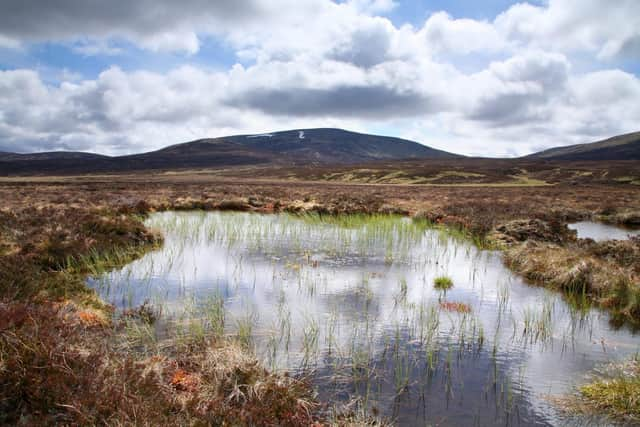Extent of protected areas in Scotland set to increase significantly - Juliet Caldwell
We urgently need to protect places like Scotland’s vast expanses of blanket bog, our ancient Caledonian forest, and our rivers and lochs, all vital for supporting species and habitats.
The protected areas we already have are our most important nature sites. They are the frontline of defence for nature against growing pressures from human activity and climate change. Today, around 18 per cent of Scotland’s land is legally protected for nature, such as through designated Sites of Special Scientific Interest.
Advertisement
Hide AdAdvertisement
Hide AdThis month, at the Biodiversity COP15, a new global framework is expected to include a target to protect 30 per cent of land and sea for nature by 2030. The Scottish Government has already signed up to this “30 by 30” target, meaning that the extent of protected areas will increase significantly in coming years.


This is good news. Protected areas are proven to be effective at supporting threatened plants and wildlife, and provide a range of other benefits including storing carbon and flood mitigation. The Dasgupta Review commissioned by the UK Treasury found that the benefits of the 30 by 30 approach would exceed costs. And this will be popular. A recent opinion poll by Survation found that two thirds of Scots support the 30 by 30 target.
But designating land as protected is not enough. Not all existing protected sites are working as well as they should be, with data showing that the condition of protected areas has not significantly improved over the past 15 years.
A new report by Scottish Environment LINK says that, as well as increasing the coverage of protected areas, the management of existing sites needs to be improved to make the 30 by 30 target effective.
We need new targets to improve the condition of existing protected areas supported by long-term funding for monitoring and management. Resilient ecological networks can tackle habitat fragmentation, allowing species to move throughout our landscapes. And our National Parks can lead the way by introducing designated nature recovery zones.
Nature is in trouble. Scotland has historically suffered from a high level of nature loss, and we face even bigger threats today. One in nine species are today at risk of national extinction and, without action, climate change will make things worse.
It is vital that the Scottish Government develops an ambitious and robust plan now to make 30 by 30 meaningful. This must mean not just creating legal protections, but effectively protecting 30 per cent of Scotland’s land through targeted monitoring, management and investment.
The world has a moral and pragmatic imperative to come together, make strong decisions and put nature at the cornerstone of economic and social recovery plans. Scotland has a chance to lead the way in making 30 by 30 meaningful for nature, but collectively we must not underestimate the task ahead.
Advertisement
Hide AdAdvertisement
Hide AdThe 30 by 30 target is a chance for a real step change for our protected areas to make them really work for nature. These must be more than lines on a map. Protected areas should be the drivers of nature’s recovery and at the heart of a wider programme of ecosystem restoration. This will deliver wider benefits across Scotland, helping place us on a pathway to a nature-positive economy, and a resilient healthy society.
Juliet Caldwell is advocacy officer at Scottish Environment LINK
Comments
Want to join the conversation? Please or to comment on this article.